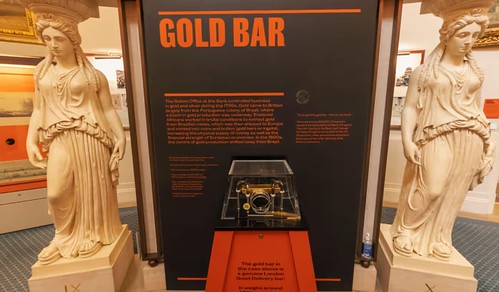
PREV ARTICLE
FULL ISSUE
PREV FULL ISSUE
BANK OF ENGLAND MUSEUM REVAMP ON HOLDUnfortunately, plans to revamp the Bank of England Museum are now on hold. Found via News &Notes from the Society of Paper Money Collectors (Volume IX, Number 33, January 30, 2024) -Editor The Bank of England has shelved a £250,000 plan to revamp its museum, adding at least a year to more than five years of debate about how to provide a focal point for financial education in England and Wales. In the time since officials at the Bank began considering a revamp of the only money museum in England and Wales, a string of museums have opened or been overhauled at a cost of more than £100m. The Bank's museum is housed on the ground floor of its grade-I listed building on Threadneedle Street and displays rare coins, cash registers and a collection that includes historically prominent women on banknotes. An exhibition on the City's links to slavery closes next month. The most prominent exhibition in recent years to debate the importance of money was staged last year at the Fitzwilliam Museum, which is funded by the University of Cambridge.
Under the title, Defaced! Money, Conflict, Protest, the show focused on money as a medium for protest and dissent and Much of the exhibition is on tour, but not in the UK – it can now be seen at the Art Gallery of Ontario, Canada.
Dr Richard Kelleher, the exhibition's curator, says:
He added:
The largest and most advanced money museum in the world is the Interactive Museum of Economics in Mexico City. Funded by the central bank, government departments, big commercial banks and financial institutions, but with an independent charter, it is housed in a refurbished convent in the heart of the city.
Among exhibits of old coins, the museum boasts a trading room with virtual reality headsets that can turn a classroom of children into day traders. There is also a There are no proposals to set up an independent economics or money museum in the UK and a revamp of either of the existing museums in London or Edinburgh seems a long way off.
To read the complete article, see:
Wayne Homren, Editor The Numismatic Bibliomania Society is a non-profit organization promoting numismatic literature. See our web site at coinbooks.org. To submit items for publication in The E-Sylum, write to the Editor at this address: whomren@gmail.com To subscribe go to: https://my.binhost.com/lists/listinfo/esylum All Rights Reserved. NBS Home Page Contact the NBS webmaster 
|
